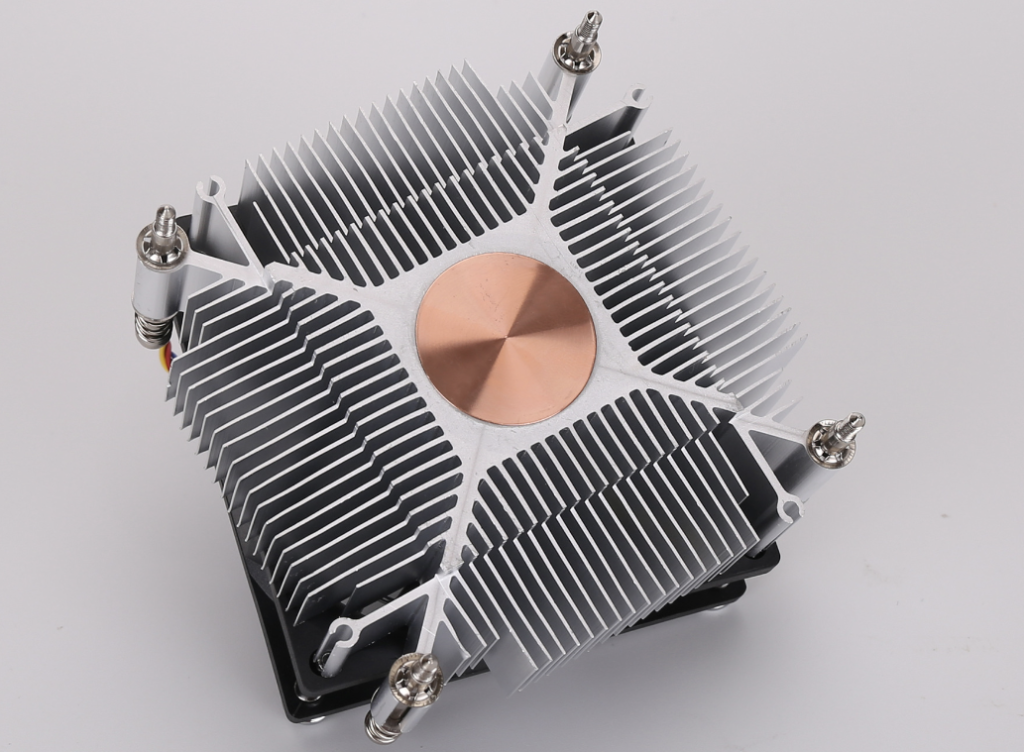What is a server host cooling system?

A server host cooling system is a key hardware device used to reduce server temperatures. Every server device needs it for temperature regulation.
What is it?
Server host cooling system is a heat dissipation system by conduction and convection. It distributes the heat generated inside the server to the external environment efficiently. to keep the server within the safe operating temperature range of the device.
Functions of the server host cooling system:
1. Heat dissipation and cooling:
The server generates a large amount of heat during operation. If it is not emitted in time, it will cause the server temperature to rise, affecting performance and stability.
Through its efficient heat dissipation mechanism, the heat dissipation system guides the heat from the internal server to the external environment, keeping the server at a suitable working temperature.
2. Protecting the hardware:
The main hardware components of the server, such as the processor (CPU), memory, hard disk, etc. They are very sensitive to temperature. Excessive temperature will accelerate hardware aging, damage or even cause failure.
By reducing the internal temperature of the server, the heat sink effectively extends the service life of the hardware and improves the stability and reliability of the server.
3. Enhance server performance:
In a high temperature environment, the performance of server hardware will be limited. The role of the heat sink is to ensure that the server is always kept within the appropriate temperature range, so as to give full play to the performance of the hardware and improve the operating efficiency of the server.

Types and structure of the heat sink system:
1. air-cooled heat sink:
It blows air through the heat sink by means of a fan. It utilizes air convection to carry away heat. Air-cooled radiators are one of the most common ways to dissipate heat in servers, with the advantages of simple structure and low cost.
2. Water-cooled heat sink:
It takes away heat through a liquid circulation system. Compared with air-cooled radiator, it has higher cooling efficiency. Water-cooled radiators usually include aluminum fins, water pumps, water tanks and cold rows and other components. The structure is relatively complex but the cooling effect is better. 3.
3. Heat pipe radiator:
It utilizes the phase change process of the work material inside the heat pipe to transfer heat. It has high efficiency and reliable heat dissipation performance. Heat pipe heat sinks are usually used in combination with air-cooled or water-cooled systems to improve heat dissipation.
The main structure of the heat sink system:
Server host heat dissipation usually consists of heat sinks, fans (or water cooling systems), heat pipes and other components.
- The heat sink is responsible for conducting heat to the surface of the heat sink.
- The fan (or water-cooling system) carries the heat away by forcing a stream of air (or water).
- Heat pipes are used to transfer heat quickly inside the radiator.
How should we choose a host heatsink?
When choosing a server host heatsink. We need to consider factors such as the server’s power consumption, size, heat dissipation needs, and budget.
Different brands and models of heat sinks in the thermal performance, noise level, ease of installation and other differences, users need to choose according to their actual needs.
To summarize
The server host heat sink is one of the important and indispensable components of the server system. Its role is to reduce the server temperature, protect the hardware and improve performance.
Hugh Aluminum is a manufacturer of Aluminium heat sink. We design and manufacture all types of aluminium heat sink.
If you need to purchase heat sink in bulk or looking for aluminium suppliers?
Please contact us! We have 14 years of manufacturing experience and served more than 600+ customers from 40+ countries. Our team is friendly and professional.
Please contact us!




